Do You Have An Inspection or Environmental Concern We Can Help With?
Mold & Indoor Air Quality Testing
C.M. Burrows Inc. provides mold testing and inspections throughout the state of New Jersey and helps homeowners and Building owners determine if Mold is present. C.M. Burrows Inc. is experienced in performing mold inspections, moisture tracking, and testing in residential homes, new construction, renovations, and commercial buildings.
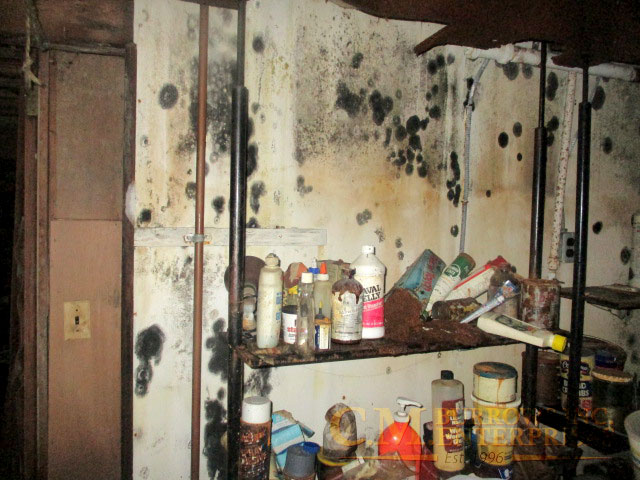 What Is Mold?
What Is Mold?
Molds are micro-organisms that are decomposers of dead organic materials. The spores and hair-like bodies of individual mold colonies are too small for us to see without a microscope. When a lot of mold is growing on a surface, it often appears, black, blue, or green. The color of mold is determined by the type and is influenced by the nutrient source, surface substrate and age of the colony.
Mold needs water to grow. Mold also needs a food source, oxygen and a temp. between 40 degrees and 100 degrees. Mold grows on wood, paper, drywall, and other materials made from wood. Mold prefers damp or wet material. Also high humidity makes enough moisture available to make surfaces damp enough for mold to grow.
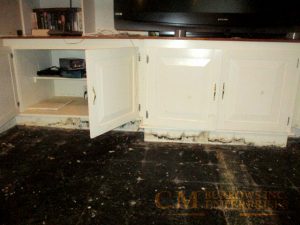 Why should I consider having a Mold test?
Why should I consider having a Mold test?
Building materials which have become water damaged due to roof leaks, plumbing leaks, excessive permeation through exterior brick, and other reasons may support mold/fungal and/or bacterial growth. The presence of such species may pose a nuisance and/or health hazard to homeowners and building occupants. C.M. Burrows Inc. conducts sampling and inspection of the air and water media in a discreet manner so that any microbiological species present may be identified.
Hiring A Professional Mold Inspector
The mold inspection will include a complete visual examination and the careful collection of air samples, tape samples, swab samples, and lab analysis of samples. If mold is present, the inspector should provide a written evaluation describing the mold type, locations, levels, and give recommendations for correction or prevention.
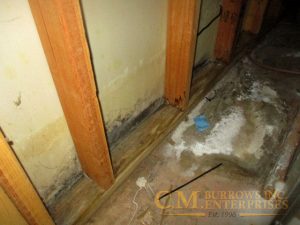
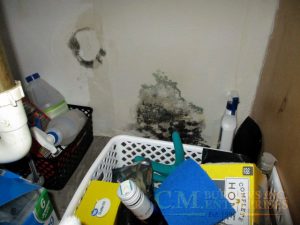
Asbestos Testing
C.M. Burrows Inc. is a New Jersey AHERA Asbestos inspection company that provides asbestos inspections, asbestos surveys for Pre-demolition, asbestos bulk sampling, asbestos air testing, and asbestos air monitoring throughout the state of New Jersey and helps homeowners, contractors, and Building owners determine if asbestos is present. The inspection will include a complete visual examination for asbestos containing materials, the careful collection of ACM, and lab analysis of ACM samples. This will especially help prior to renovation or construction activities that disturb suspect asbestos. Following the asbestos survey C.M. Burrows will provide a comprehensive report with findings that include locations, sample results, and quantities of all asbestos containing material.
The State of New Jersey’s Department of Community Affairs (DCA) administers/enforces asbestos regulations in the state through the Uniform Construction Code. In January 2012, the DCA issued a directive to all local building code officials within the state not to issue a demolition permit without the completion and documentation of an asbestos pre-demolition survey. This is applicable to both residential and commercial structures.
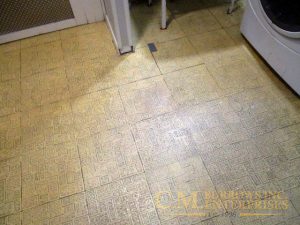
Asbestos floor tiles
What Is Asbestos?
Asbestos is a mineral fiber. It can be positively identified only with a special type of microscope. There are several types of asbestos fibers. In the past, asbestos was added to a variety of products to strengthen them and to provide heat insulation and fire resistance
Why should I consider having an asbestos test?
Up Until the 1980s, many types of building products and insulation materials used in homes contained asbestos.
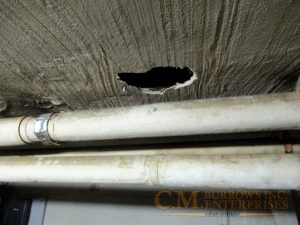
Asbestos ceiling
The following are just some of the materials in the home that can contain asbestos: Popcorn Acoustical Ceiling, Soundproofing, Acoustical Ceiling Tile, Attic insulation, Vermiculite, Hot water or steam Pipe Insulation, Thermal Insulation (blow-in, bat, or spray-on), Vinyl Floor Tile, Linoleum Sheet Flooring, Floor Tile Mastic, Wallboard Mud, Plaster Skim Coat, Wallboard (rare), Siding, Municipal Water or Sewer Pipes, Roll-On Roofing, Window Glazing, Woodstove, Furnace, or Oven Door Gaskets, Fireproofing, Grout
From studies of people who were exposed to asbestos we know that breathing high levels of asbestos fibers can lead to an increased risk of: lung cancer; mesothelioma, a cancer of the lining of the chest and the abdominal cavity; and asbestosis, in which the lungs become scarred with fibrous tissue.
Hiring A Professional Asbestos Inspector
Only a trained AHERA Asbestos inspector can take samples of suspect ACM in New Jersey. C.M. Burrows Inc. helps homeowners, contractors, and Building owners determine if asbestos is present. Following the asbestos survey C.M. Burrows will provide a comprehensive report with findings that include locations, sample results, and quantities of all asbestos containing material. If asbestos is present, the inspector should provide a written evaluation describing its location and give recommendations for correction or prevention.
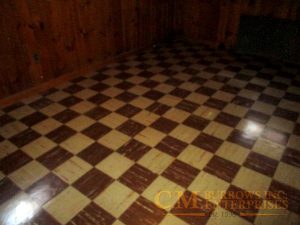
Asbestos flooring tiles
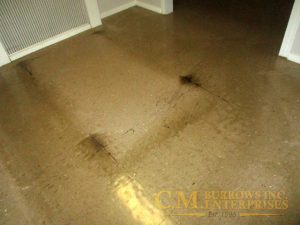
Asbestos flooring tiles
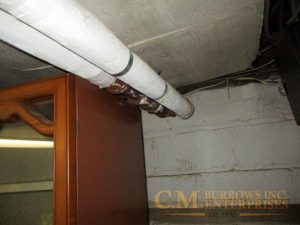
Asbestos Steam Pipe Insulation
Indoor Air Quality-VOCs
There are many possible sources for poor indoor air quality and High Voc levels in a commercial building or residential home. There are several types of air-contaminating products and materials that may present. The Contamination sources are divided into three main source groups: Building-Related Sources, Mixed Building and Lifestyle Sources, and Lifestyle Sources.
Building Related Sources:
- Coatings (Paints, Varnishes, etc.)
- PVC Cement
- HFCs and CFCs (FreonsTM)
Mixed Building and Lifestyle Sources
- Building Materials-Toluene Based
- Gasoline
- Fuel Oil, Diesel Fuel, Kerosene
- Moth Balls (Naphthalene Based)
- Moth Crystals (p-Dichlorobenzene Based)
- Light Hydrocarbons
- Light Solvents
- Methylene Chloride
Lifestyle Related Sources
- Personal Care Products
- Alcohol Products
- Odorants and Fragrances
- Dry Cleaning Solvents
- Medicinals
Mold / MVocs are caused from Building materials which have become water damaged due to roof leaks, plumbing leaks, excessive permeation through exterior brick, and other reasons may support mold, fungal, and bacterial growth. The presence of such species may pose a nuisance and/or health hazard to homeowners and building occupants.
Mold needs water to grow. Mold also needs a food source, oxygen and a temp. between 40 degrees and 100 degrees. Mold grows on wood, paper, drywall, and other materials made from wood. Mold prefers damp or wet material. Also high humidity makes enough moisture available to make surfaces damp enough for mold to grow. C.M. Burrows Inc. conducts sampling and inspection of the air and water media in a discreet manner so that any microbiological species present may be identified.
Health Effects of poor indoor air quality and High VOC Levels-Exposure
The presence of chemicals-Vocs in your home can cause a wide range of problems, ranging from an unpleasant odor to physical symptoms (burning and irritation in the eyes, nose, and throat; headaches; nausea; nervous system effects; severe illness; etc.). Anyone with respiratory issues like asthma and allergies, as well as children, the elderly, and pregnant women are more susceptible to poor indoor air quality than healthy individuals.
CM Burrows Inc provides the most advanced and trusted air testing sampling methods to identify poor indoor air quality and High VOC Levels in commercial buildings and residential homes.
Formaldehyde Testing
There are many possible sources for formaldehyde in a home or building, although building products typically make up a large proportion of the concentration. Any recent renovation or new materials brought into the home is likely to increase the formaldehyde levels.
Sources of Formaldehyde:
- Products that contain urea-formaldehyde (UF) resins
- particleboard, hardwood plywood paneling, medium density fiberboard
- Products that contain phenol-formaldehyde (PF) resins (lower concentrations of formaldehyde than UF resins)
- softwood plywood, flake or oriented strand board
- Pre-finished engineered flooring
- Insulation
- Glues and adhesives
- Paints and coatings
- Textiles
- Disinfectant cleaning products and soaps
- Preservatives
- Personal care products, especially certain hair products
- Cosmetics
- Pet care products
- Bactercides and fungicides
- Combustion byproduct (burning)
- Tobacco smoke and fuel-burning appliances
Health Effects of Formaldehyde Exposure
Health effects vary depending on the individual. Common symptoms of acute exposure include irritation of the throat, nose, eyes, and skin; this irritation can potentially exacerbate asthma symptoms and other respiratory illnesses. Long term, or chronic, exposure may also cause chronic runny nose, chronic bronchitis, and obstructive lung disease. In 2004, the International Agency for Research on Cancer (IARC) reclassified formaldehyde from “probably carcinogenic to humans” to “carcinogenic to humans” related to nasopharyngeal cancer. Since many factors are involved in the development of cancer, no definitive “safe level” of exposure has been established. The best way to reduce the risk of cancer is to limit exposure.
CM Burrows Inc. provides the most advanced and trusted air testing sampling methods to identify Formaldehyde sources and levels in commercial buildings and residential homes.
Radon Gas Testing
Continuous Radon Monitors & Charcoal Canisters are used when testing for radon gas.
Radon is a colorless, odorless and tasteless naturally occurring radioactive gas that seeps from soil into the home through cracks and other opening in the foundation or walls in contact with the soil.

Exposure to radon causes lung cancer. The National Academy of Sciences estimates that radon causes between 15,000 – 22,000 lung cancer deaths each year in the U.S. Radon gas presents one of the highest health risks we face in our daily lives.
The New Jersey Department of Environmental Protection (NJDEP) recommends that all homeowners test their homes for radon.
Radon gas measurement is easy and should be considered by the buyer as part of any real estate transaction. At the time of the contract of sale, New Jersey law (N.J.A.C. 26:2D-73) requires that the seller provide the buyer with a copy of the results of any radon testing and information on any remediation that has been conducted in the home.
If you are testing a house that you are considering purchasing, you must use the services of a NJDEP certified radon tester. All professionals who perform radon tests or mitigations in New Jersey must be certified. They must demonstrate sufficient education and experience, take NJDEP approved courses in radon testing or mitigation techniques, and pass a written examination.
The NJDEP recommends taking steps to reduce radon levels if the gas concentration in the lowest liveable level of the house is four picocuries per liter (4 pCi/L) or more. A picocurie is a measure of radioactivity. This will markedly decrease the risk of developing lung cancer caused by radon exposure.
 The most common method of radon gas remediation is sub-slab ventilation, which uses a fan to draw the radon gas out from below the slab or foundation, thereby preventing its entry into the house. Based on New Jersey data, this method is effective in almost every case in reducing radon gas levels to levels lower than 4 pCi/L. The cost is typically about $1,200, although it can range from $500 to $2,500.
The most common method of radon gas remediation is sub-slab ventilation, which uses a fan to draw the radon gas out from below the slab or foundation, thereby preventing its entry into the house. Based on New Jersey data, this method is effective in almost every case in reducing radon gas levels to levels lower than 4 pCi/L. The cost is typically about $1,200, although it can range from $500 to $2,500.
CM Burrows Inc performs tobacco Smoke Testing. For this analysis, Tobacco Smoke (TS) is defined as secondhand smoke or environmental tobacco smoke (the mixture of smoke generated by side-stream smoke, i.e., the burning end of tobacco products, and the mainstream smoke exhaled by smokers) as well as third hand smoke or stale tobacco smoke (the smoke residue that has off-gassed into the air and is still present after smoking has ceased). This analysis examines the submitted air sample for the presence of certain chemical compounds that are used as surrogates, i.e., TS marker compounds, for the thousands of chemical compounds present in TS. These marker compounds could indicate the presence of TS when they are present.
There are a number of factors that can influence how tobacco smoke travels in air and how long it is detectable, including but not limited to:
- amount, duration, and location of smoking
- how long the smoking has been occurring (e.g., weeks, months, years)
- type of material and construction of the wall/floor/ceiling · building envelope (i.e., how tight is the building)
- air exchange rates
- temperature and humidity
- amount of porous materials (e.g., carpet, draperies, furniture, etc.)
- location of the sample collection equipment
- whether sample collection occurs in the same area as the smoking or in an adjacent space
Purpose of the Test
This test is designed for analysis of fire residues for presence of analytes of interest (Soot, Char, Ash, Carbon Black). The results of this test offers the client valuable information related to the extent of damage produced by a fire, improperly vented heat system (Puff Back), or fireplace back drafting. These results will be submitted to the property owner and can be used for cleaning assessment and/or insurance claims.
Sampling
Surface sampling: Alcohol prep wipes (recommended surfaces: TV’s computer displays, plastic surfaces, furniture, windows, mirrors, internal surfaces of refrigerators; avoid painted surfaces)
Main living areas, from top of interior door frame, window frame, from corners of floors, door tracks, attic areas)
Tape lifts (recommended surfaces- same as for alcohol prep wipes)
Air Sampling: Pre-weighed cassettes
LEED 4 IAQ AIR TESTING PROGRAM
Are You Ready for the New V4 IAQ Test?
We are here to help ESTABLISH BETTER QUALITY INDOOR AIR IN THE BUILDING AFTER CONSTRUCTION AND DURING OCCUPANCY.
The New V4 requirements are as follows:
Air testing now worth (2 points)
IS your building complete?
After construction ends and before occupancy, but under ventilation conditions typical for occupancy, conducting baseline IAQ testing using protocols consistent with the methods listed in Table 1 for all occupied spaces. We then use the current versions of ASTM standard methods, EPA compendium methods, or ISO methods, as indicated. Our Laboratories that conduct the tests for chemical analysis of formaldehyde and volatile organic compounds must be accredited under ISO/IEC 17025 for the test methods they use. Retail projects may conduct the testing within 14 days of occupancy.
LEED 3.2 IAQ AIR TESTING PROGRAM
SIMPLE, COST-EFFECTIVE,SUSTAINABLE LEED Air-Sampling
Our Labs team of analysts and LEED® Certified Professionals aimed to utilize its unique capabilities to provide a program that is simple, cost-effective, and environmentally friendly. After thorough research, the Labs team developed an air-sampling program using our specially treated whole air-sampling canisters and instrumentation while adhering to all requirements set for the by LEED® 2009 for New Construction and Major Renovations IEQ Credit 3.2: Construction Indoor Air Quality Plan—Before Occupancy OPTION 2. Air Testing.
Get A Quote Today
Fill out the form below and we will get back to you within one working day.
